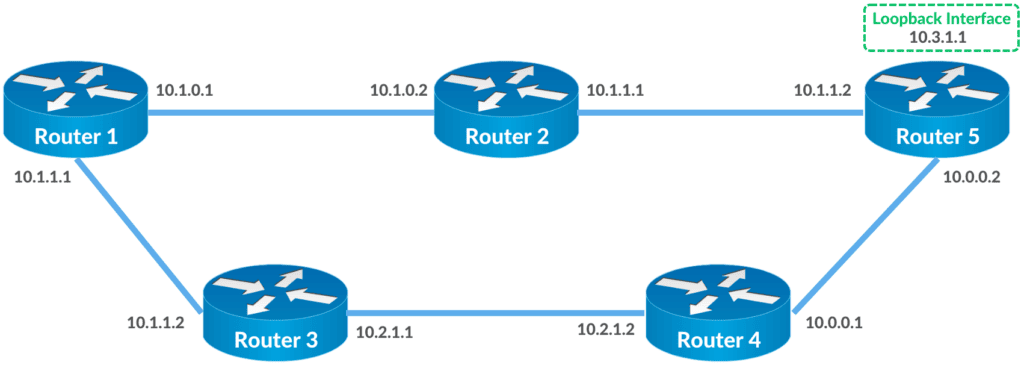1. Introduction
The loopback interface has many potential uses. In this tutorial, we’ll study the role of the loopback interface in routing protocols.
First, we’ll take a look at the concept of loopback interfaces. Next, we’ll see why loopback interfaces are important for routing protocols. Finally, we’ll learn the function of the loopback interface in two well-known routing protocols, OSPF and BGP.
2. The Loopback Interface
Any device capable of communicating over some network has one or more network interfaces. These interfaces are physical components that allow devices to transmit data across a communication channel.
A loopback interface, on the other hand, is a virtual network interface that doesn’t have a physical interface associated with it. This interface allows, for example, the device to communicate with itself using the TCP/IP protocol stack.
Thus, unlike physical interfaces, loopback interfaces don’t go down and up depending on the state of the physical link. Therefore, a loopback interface will always be up unless someone disables it.
Generally, all devices have at least one default loopback interface. Typically, the IP address 127.0.0.1 (or ::1 in IPv6 networks) is assigned to this interface. However, we can add multiple loopback interfaces and assign them to any IP address we desire.
3. Why Are Loopback Interfaces Useful in Routing Protocols?
Loopback interfaces are very useful for routing protocols due to their stability. In particular, we can use such interfaces to reach routers regardless of which physical links are active on each router. Let’s examine an example to understand this point better.
The figure below illustrates a typical network with five routers (numbered from 1 to 5) connected in a simple topology. In this case, each router contains multiple physical network interfaces to which the links that interconnect them are plugged:

Let’s consider that certain network traffic must be forwarded from Router 1 to Router 5. In such a case, there are two possible paths:
- Top path: passing through routers 1, 2, and 5
- Bottom path: via routers 1, 3, 4, and 5
However, if some link in the top path goes down, we can’t reach Router 5 via the IP address 10.1.1.2 (the address of the physical interface connected to that path). Similarly, we can’t reach Router 5 via 10.0.0.2 in case the bottom path goes down.
Therefore, if we want to reach a router using the IP address of a physical interface, we need to know which IP address belongs to an interface that is currently active. Unfortunately, this can be a very expensive and difficult task to manage in the long term.
Instead, a better approach would be to add a loopback interface to Router 5 and assign a valid IP address to it. The following figure illustrates this situation:

This will allow us to reach Router 5 using a single IP address (10.3.1.1), regardless of which link is currently up. Therefore, we can only include the IP address of the loopback interface in some mapping (routing table) instead of the IP addresses of multiple physical interfaces.
4. Use in Two Routing Protocols: OSPF and BGP
OSPF is an interior gateway protocol for routing IP packets within a single routing domain. This protocol uses a 32-bit field called Router ID to identify each router.
Specifically, the Router ID is the IP address of a router’s interface. The OSPF protocol prioritizes selecting the IP address of a loopback interface rather than a physical one.
Similarly, loopback interfaces are important in BGP, the most prominent external gateway protocol. In the BGP protocol, neighboring routers, called peers, need to establish TCP sessions with each other to exchange routing information.
This method of peering can be done using the IP address of any of the routers’ operational network interfaces. However, by establishing the session using the address of a loopback interface, we have the advantage of the BGP session not being dropped whenever there are multiple paths between the peers.
5. Conclusion
In this article, we study why loopback interfaces are important for routing protocols. As we’ve learned, loopback interfaces remain up regardless of whether the physical links go down or not. That’s why protocols such as OSPF and BGP use them to identify routers and establish relationships between neighbors.